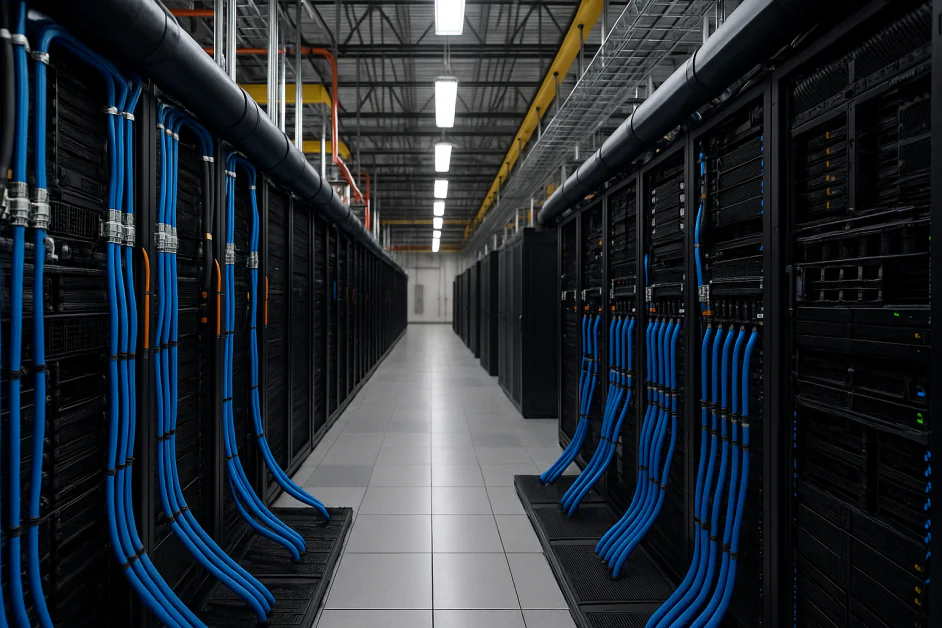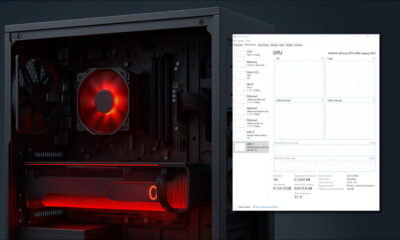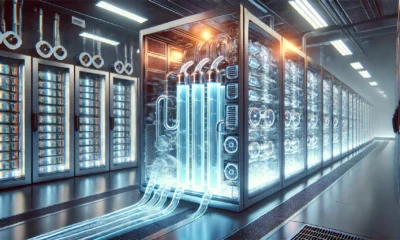Artificial Intelligence
The Real AI Bottleneck: Power, Cooling, and the Physics of Scale

Artificial intelligence has advanced at an extraordinary pace over the past decade. Faster GPUs, larger clusters, and revolutionary architectures have unlocked breakthroughs that once seemed impossible. Yet as the industry pushes toward trillion-parameter models and hyperscale AI factories, the next barrier has nothing to do with algorithms. The real bottleneck today is physical: power, cooling, and the infrastructure required to sustain compute at planetary scale.
The question is no longer how many chips you can manufacture but whether you can supply the gigawatts, water, and transmission lines needed to operate them. Infrastructure, not silicon, is what will set the pace of AI in the years ahead.
Gigawatts Over Gigaflops
OpenAI’s “Stargate” project, being built with Oracle and SoftBank, is targeting nearly 7 gigawatts of capacity across U.S. campuses — comparable to multiple nuclear reactors. At this scale, the main challenge isn’t producing GPUs but securing power plants and substations to keep them running.
Microsoft’s demand is equally staggering. Its AI workloads are projected to require as much electricity as the entire New England region by 2030. This helps explain why the company has invested tens of billions in renewable projects and is also pursuing more experimental options like nuclear fusion and advanced nuclear reactors.
The dynamics are rippling into energy policy. In the PJM Interconnection, the regional transmission organization that manages the grid for over 65 million people across 13 states and Washington, D.C., utilities are exploring curtailment mechanisms for data centers during peak demand. Major technology firms are lobbying against such restrictions, but the fact that regulators are even considering them shows how central AI has become to grid planning.
The Cooling Challenge
Supplying electricity is only half the problem. Once power reaches the racks, the next challenge is heat. Each high-end GPU consumes around 700 watts, and with racks hosting hundreds of GPUs, densities are reaching 100 to 600 kilowatts per rack. Air cooling, the industry standard for decades, becomes unworkable beyond roughly 40 kilowatts per rack due to airflow inefficiencies and recirculation.
Liquid cooling has therefore shifted from niche to mainstream. NVIDIA’s latest liquid-cooled Blackwell platforms are designed for hyperscale AI clusters and deliver 25× better energy efficiency and 300× greater water efficiency than air-cooled racks. The company has also partnered with Vertiv on a reference architecture that can handle more than 130 kilowatts per rack, making dense GPU deployments feasible.
Startups are innovating as well. Corintis, a Swiss company embedding microchannels directly into chip substrates, recently raised $24 million in funding and already counts Microsoft among its customers. Microsoft’s own research team has demonstrated microfluidic channels etched into chip packaging, reducing peak GPU temperatures by up to 65 percent and tripling efficiency compared to traditional cold plates. These technologies make it possible to keep GPUs running at full throttle without melting down the data center.
Water as a Strategic Variable
Liquid cooling introduces another variable: water consumption. Evaporative and chilled-water systems can require enormous volumes when scaled to campuses of hundreds of megawatts. In Phoenix, clusters of data centers may demand hundreds of millions of gallons of water per day, raising concerns in drought-stricken regions.
This has spurred development of zero-water and closed-loop cooling systems. IEEE Spectrum has documented strategies such as sealed dielectric immersion baths, dry coolers, and water-free chillers that cut potable water use to near zero. Meanwhile, some operators are experimenting with waste-heat reuse. Projects like Aquasar and iDataCool have shown how hot-water cooling loops can feed building heating systems or absorption chillers, recycling much of the energy that would otherwise be lost.
The trade-off is often between water and electricity: closed-loop or dry systems consume more energy, while evaporative designs save power but draw heavily on water. In water-stressed regions, policy is increasingly favoring water conservation even if it means higher energy consumption.
Infrastructure and the Grid
Even with power and cooling solutions in place, the final bottleneck is infrastructure. Siting decisions now determine winners and losers in the AI race.
Microsoft’s $80 billion Fairwater campus in Wisconsin illustrates how strategic location has become. The site spans 315 acres, houses hundreds of thousands of GPUs, and was chosen for its access to substations, fiber lines, and groundwater. The design also emphasizes closed-loop cooling to minimize water impact.
To support its growing load, Microsoft has signed a landmark deal with Brookfield to add 10.5 gigawatts of renewable capacity by 2030. At the same time, it has backed more experimental projects such as a nuclear fusion plant under construction by Helion Energy, scheduled to power data centers by 2028, and a 20-year agreement to restart the Three Mile Island nuclear plant in Pennsylvania.
Amazon and Google are taking similar steps, securing sites next to nuclear plants and developing their own clean-power portfolios. In Ireland, where data centers already consume more power than all households combined, regulators have frozen new approvals until at least 2028, underscoring how politics and permitting can derail even the best-funded projects.
Smarter Operation: AI Managing AI
Interestingly, AI itself is being used to manage the infrastructure burden. Reinforcement learning has been deployed in production data centers to optimize cooling systems, producing 14 to 21 percent energy savings without compromising safety. Digital twins and predictive modeling are also being used to anticipate hot spots, pre-chill equipment, and shift workloads to cooler hours or periods of renewable oversupply.
Google has already demonstrated how machine learning can cut data center cooling needs by 40 percent, and other operators are adopting similar systems. As power and cooling costs rise, these operational savings are becoming an essential competitive edge.
The Strategic Outlook
The trajectory is clear. AI demand is expected to double global data center electricity use by 2030, with AI workloads alone accounting for a mid-single-digit share of total global power consumption by 2050. While NVIDIA and other chipmakers continue to push silicon performance forward, the practical frontier of AI will be defined by how quickly utilities can build new generation, transmission, and cooling infrastructure.
For companies building AI products, this means roadmaps are increasingly tied to where capacity exists. For investors, the most valuable plays may be utilities, transmission developers, and cooling startups rather than just GPU suppliers. And for policymakers, the debate over AI is shifting from questions of ethics and data governance to questions of megawatts, water, and grid modernization.
AI’s future will not only be decided in research labs and chip foundries, but at substations, cooling loops, and power plants. The physics of scale — not just the mathematics of algorithms — is what will determine the speed and scope of artificial intelligence in the decade ahead.












